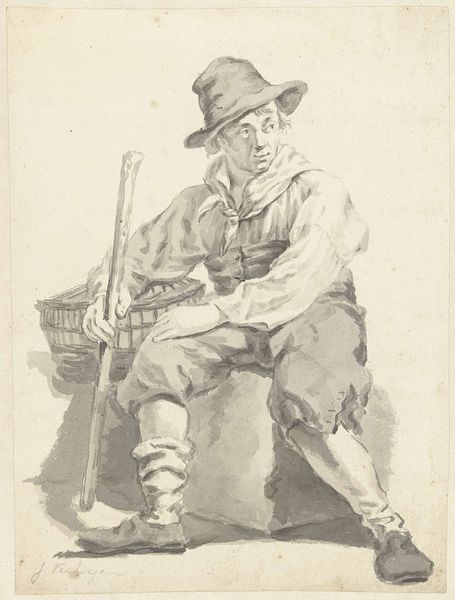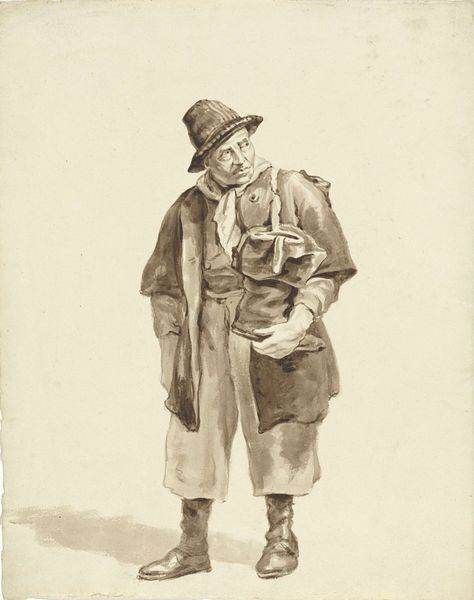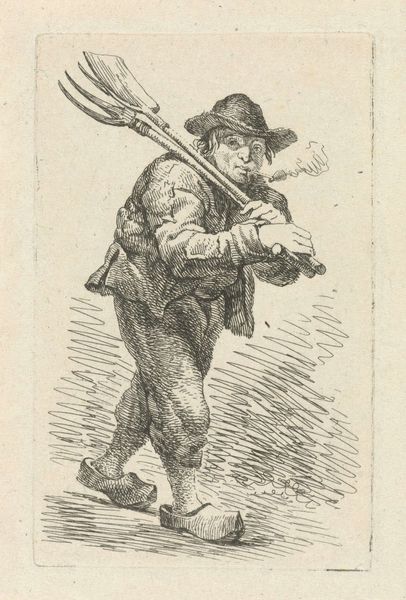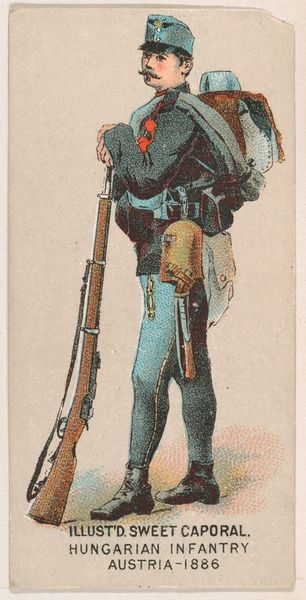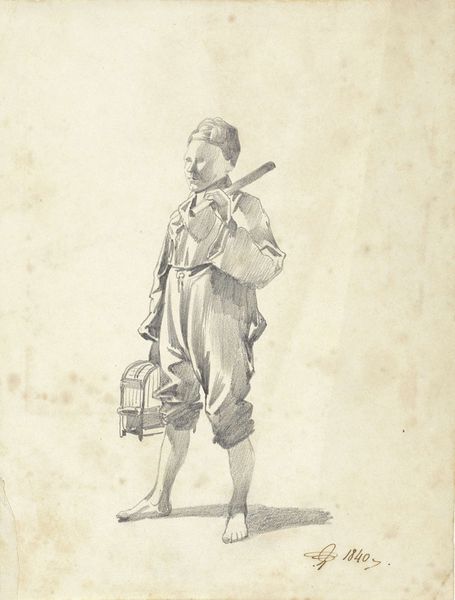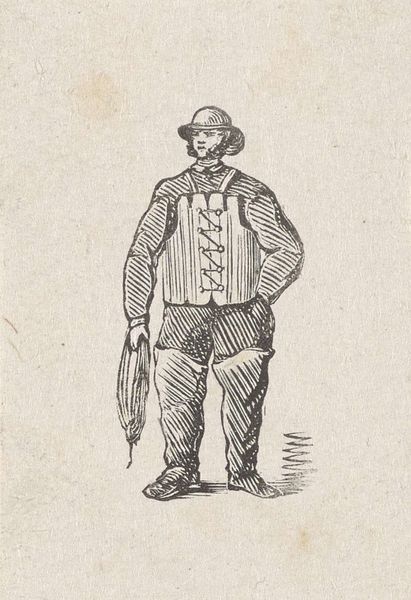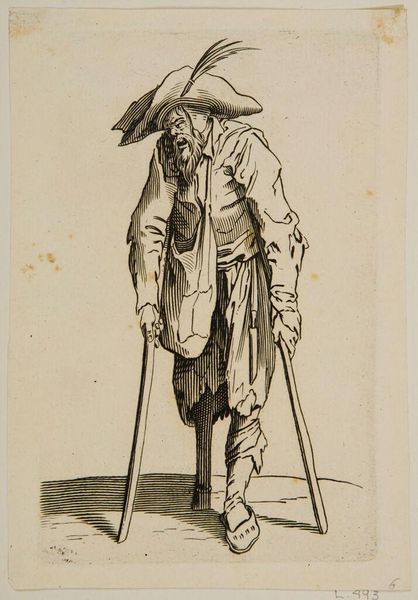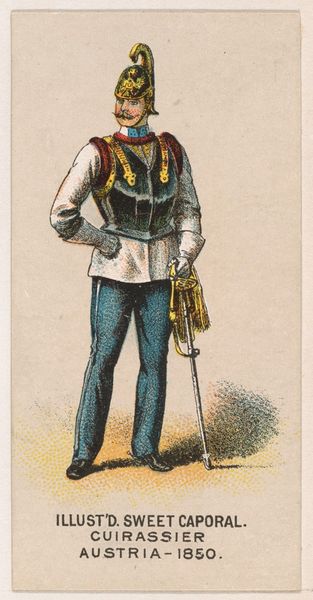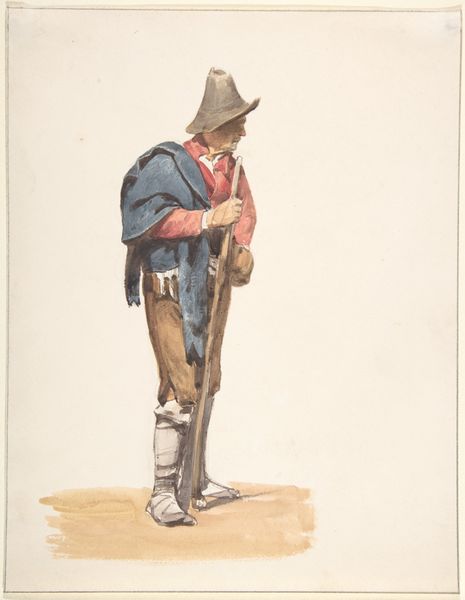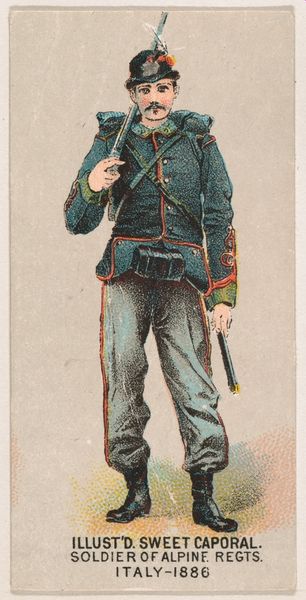
Dimensions: height 215 mm, width 151 mm
Copyright: Rijks Museum: Open Domain
Curator: This is an engraving titled "Draailierspeler," or "Hurdy-Gurdy Player," dating from somewhere between 1772 and 1833, and the artist is, alas, currently unknown. It resides here in the Rijksmuseum. What strikes you initially about it? Editor: The delicacy, certainly. The intricate detail achieved through engraving lends a remarkable subtlety to the rendering of the figure and the instrument. The stippling, the line work…it all comes together to create a soft, almost dreamlike texture. Curator: And it speaks volumes about the social reality of street musicians at the time. Look closely, and you realize the clothing, although fairly neat, still signals a clear socioeconomic status. There’s a deliberate portrayal of a marginalized figure finding his own agency through music. Editor: Yes, I can appreciate that angle. But observe the way light and shadow interact, animating the scene and accentuating the three-dimensionality of the figure. The curve of the hurdy-gurdy against the straight lines of his jacket… It's a wonderful interplay of form, which really pushes the piece from documentation to artistic expression. Curator: That "documentation" reveals a lot. Street performers were often stigmatized. This image serves as a visual record of these often overlooked lives, humanizing their experiences in a time of vast economic disparities. We have to see it through the lens of class and performance. Who had the agency to perform, who was allowed to witness it, and what were the messages inherent in their songs? Editor: Point taken, but even considering its potential social implications, can't we admire how the anonymous artist organized this composition? The musician’s posture creates an asymmetrical balance, engaging the viewer with subtle visual tension. And that soft lighting again—very well conceived. Curator: Definitely! It's in examining those compositional elements in tandem with socioeconomic histories that we find richer meaning. It reveals a powerful intersection of art and lived experience, providing crucial glimpses into a complex social tapestry. Editor: Fair enough. Appreciating art on multiple levels is key. We should all engage with a piece’s formal aspects, its underlying philosophies, and historical contexts. Curator: Precisely. When considering visual arts, looking closely encourages us to see others with depth, nuance, and—hopefully—increased compassion.
Comments
No comments
Be the first to comment and join the conversation on the ultimate creative platform.
